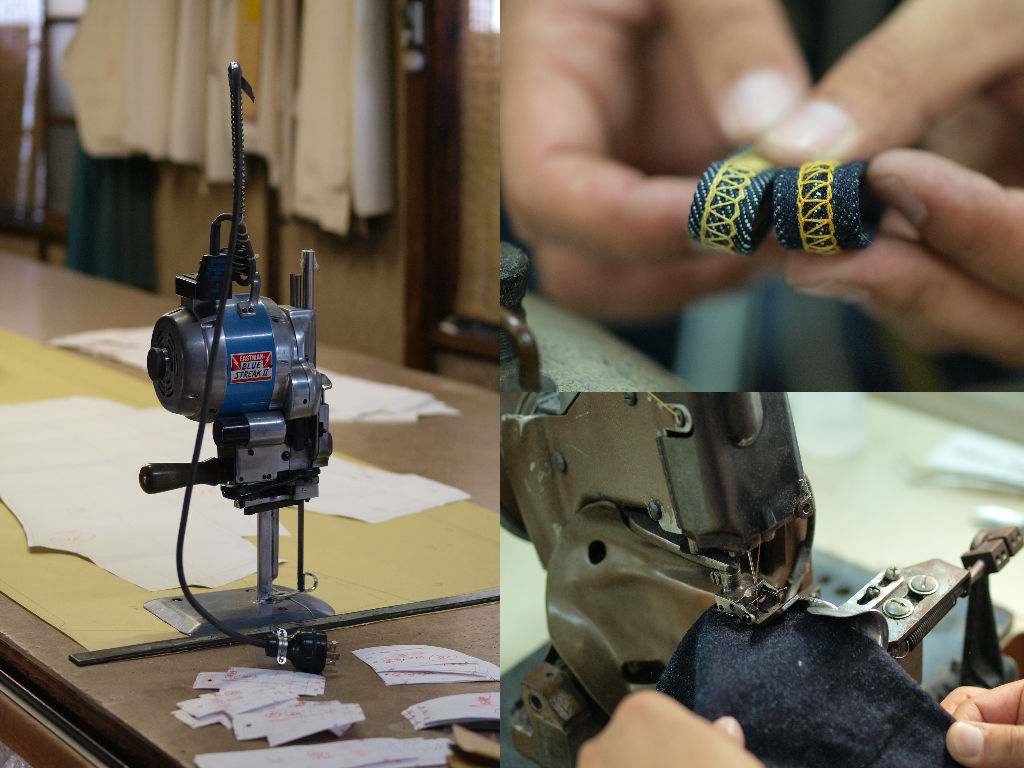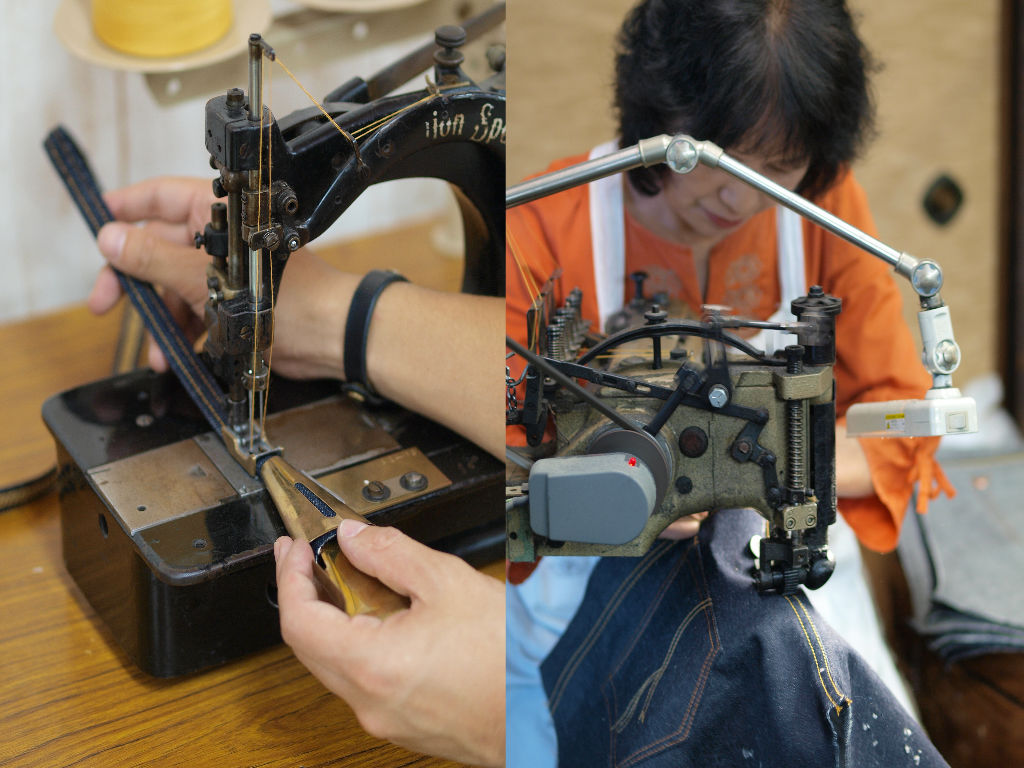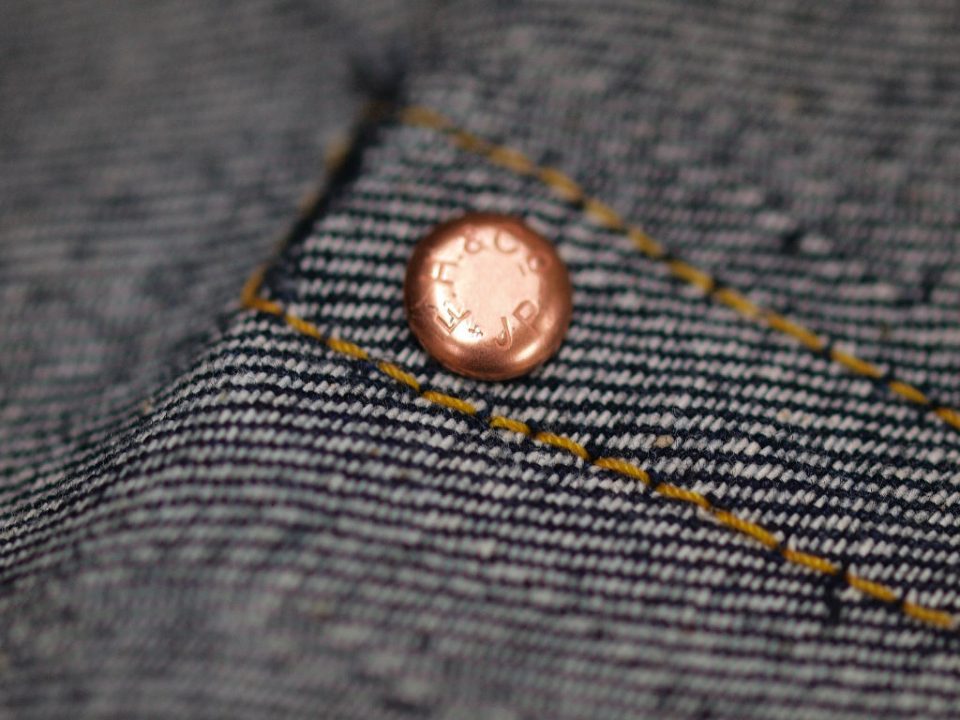We Go Behind the Scenes to Learn The Secrets Of How The Flat Heads Jeans Are Made
Over the last decade, The Flat Head has build a solid presence in the western markets. Gone are the days when Japanese magazines were your only chance to browse the collections. Since 1996, the brand has been crafting high-end jeans, garments, and accessories with strong references to classic Americana.
It is especially the award winning Pioneer denim with its pronounced vertical “tate-ochi” fades we love. Yet the denim is only one of the noteworthy aspects of the meticulously reproduced vintage-style jeans. We got a chance to dig a little deeper to explore the production operations of the brand.
The Recipe of Flat Head’s Denim
Founder of The Flat Head, Masayoshi Kobayashi wanted to create the quintessential vintage denim. To do so, he used countless vintage jeans produced between the 1920s and the 1960s as references to learn about the dyeing processes, stitching techniques, and the denim itself. One of the predominant characteristics of TFH jeans is the unique selvedge denim, which is woven on vintage shuttle looms.
The result is an exceptional vintage feeling, which combined with the secret dyeing technique and specially selected cotton yarn makes it fade in a particularly outstanding way.
Meticulously Selected Vintage Machines
The shuttle looms are not the only vintage machinery used to make TFH jeans. Kobayashi-san’s pursuit for authentic details, and his examination of every detail of the original jeans he used as references, guided him towards the machinery he required to reproduce the design and construction.
For each process there’s a vintage machine:
- A Durkopp 2-needle machine from the 1960s is used to sew the front pockets lips.
- The chain stitched hems are made with a 1940’s Union Special 43200G.
- A 1960’s Union Special rolled seam sewing machine makes the yokes.
- Sewing the back pockets on to the jeans is done with a 1950’s Union Special.
- The waistband is attached with a 1960’s Union Special chain stitch machine.
- Button holes are sewn and cut with a 1960’s Durkopp button-holing machine.
- Finally, the belt loops are made with a modified 1920’s Union Special 2-needle double chain stitch machine.
As if that wasn’t enough, the ways each of these production steps are carried out is different from most other jeansmakers.

The Jeans Are Produced In Various Facilities
All Flat Head jeans are made in Kojima in Okayama; a city where more than 100 family run businesses are dedicated to the denim industry. What sets The Flat Head apart from western brands is the fact that specialised companies make the different construction steps. It’s a production chain that involves a number of cutting houses and three different sewing houses. This is the traditional Okayama-way of crafting jeans.
Despite of slower production, this production process gives each of the specialised sub-contractors one thing to focus on at a time, which gives them unprecedented expertise and makes them able to concentrate on their work.
The results are expressed in the many remarkable features of TFH jeans.




23 comments
I don’t think the title of your article matches the content lol. Just kidding, mainly because I had some doubts after reading the article. https://accounts.binance.com/el/register-person?ref=B4EPR6J0
generic name for allergy pills is claritin stronger than benadryl best allergy pill
Thank you for your sharing. I am worried that I lack creative ideas. It is your article that makes me full of hope. Thank you. But, I have a question, can you help me?
pharmacies in mexico that ship to usa: mexican mail order pharmacies – medicine in mexico pharmacies
medicine in mexico pharmacies: mexico pharmacy – mexico drug stores pharmacies
best online pharmacy india https://indiaph24.store/# Online medicine home delivery
mail order pharmacy india
reputable indian online pharmacy http://indiaph24.store/# online shopping pharmacy india
buy prescription drugs from india
http://mexicoph24.life/# best online pharmacies in mexico
mexican mail order pharmacies: mexican pharmacy – mexican pharmacy
mexican online pharmacies prescription drugs cheapest mexico drugs mexican pharmaceuticals online
https://canadaph24.pro/# canadian pharmacy world reviews
buy zestoretic online: lisinopril pill 20mg – lisinopril 40 mg no prescription
http://ciprofloxacin.tech/# ciprofloxacin over the counter
cytotec abortion pill buy cytotec over the counter buy cytotec in usa
tamoxifen and ovarian cancer: tamoxifen warning – common side effects of tamoxifen
tamoxifen side effects forum buy tamoxifen tamoxifen breast cancer prevention
https://cytotec.club/# п»їcytotec pills online
buy lisinopril online: can i buy lisinopril over the counter – 50mg lisinopril
http://lisinopril.network/# lisinopril 40 mg purchase
п»їcipro generic ciprofloxacin 500 mg tablet price antibiotics cipro
http://ciprofloxacin.tech/# cipro ciprofloxacin
lisinopril 5 mg tablet price in india buy generic lisinopril prinivil medication
buy cipro: where can i buy cipro online – buy cipro online